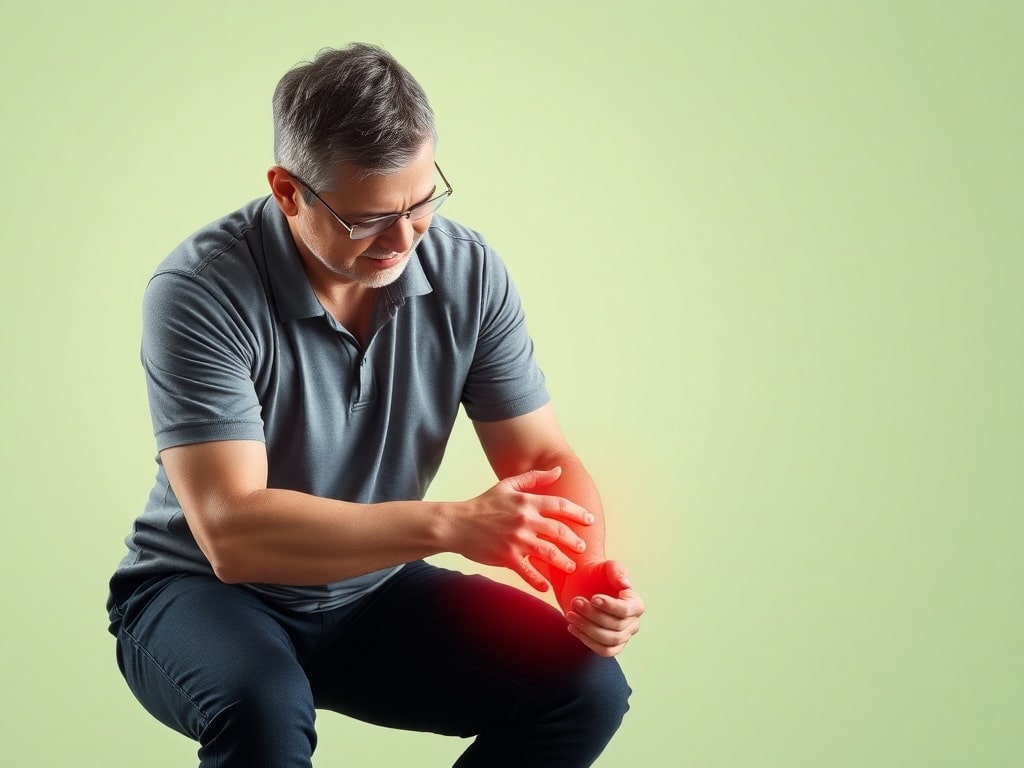Live Your Best Life: Optimizing Joint Health for Active Seniors
As we gracefully journey through life, our bodies undergo natural transformations. Among these changes, joint health emerges as a critical factor in determining our ability to maintain an active and fulfilling lifestyle, especially for seniors. Imagine waking up each morning with the freedom to move without stiffness or pain, to pursue your passions, and to fully engage in life’s adventures. This is the promise of prioritizing our joint health. But before we dive into the how-tos of joint care, let’s first understand what happens to our joints as we age and why joint health awareness is essential.
Understanding Age-Related Joint Changes
Our joints, the intricate connections between our bones, are fundamental to movement. Over time, these joints experience wear and tear, leading to age-related changes. Cartilage, the smooth, protective tissue that cushions our joints, begins to thin and degrade. This can result in bone-on-bone friction, causing pain, stiffness, and reduced mobility. Common causes of joint pain in seniors include osteoarthritis (the most prevalent form), rheumatoid arthritis, and injuries. Understanding these changes is the first step in proactively managing our joint health awareness.
Common Causes of Joint Pain in Seniors
- Osteoarthritis: The gradual breakdown of cartilage.
- Rheumatoid Arthritis: An autoimmune disorder causing inflammation of the joints.
- Injuries: Past injuries can predispose seniors to joint problems.
- Gout: A type of arthritis caused by a buildup of uric acid in the joints.
The Importance of Joint Health for Active Seniors
Maintaining robust joint health is paramount for active seniors. Healthy joints enable us to participate in the activities we love, whether it’s gardening, dancing, or simply taking a leisurely stroll. Joint pain can severely limit mobility, leading to a decline in physical activity and independence. Beyond the physical limitations, joint pain can also take a psychological toll, contributing to feelings of frustration, isolation, and even depression. Prioritizing joint health is, therefore, an investment in both our physical and mental well-being, fostering joint health awareness for ourselves and others.
Nutrition for Joint Health
What we eat plays a pivotal role in supporting joint health and reducing inflammation. A balanced diet rich in anti-inflammatory foods and essential nutrients can help protect our joints and alleviate pain. Omega-3 fatty acids, found in fatty fish like salmon and flaxseeds, are known for their anti-inflammatory properties. Antioxidant-rich fruits and vegetables, such as berries and leafy greens, help combat free radicals that can damage joint tissues. Conversely, processed foods, sugary drinks, and excessive red meat can exacerbate inflammation and worsen joint pain. By making conscious dietary choices, we can nourish our joints from the inside out, promoting joint health awareness.
Essential Nutrients for Cartilage Formation and Repair
- Vitamin C: Crucial for collagen synthesis, a key component of cartilage.
- Vitamin D: Helps regulate calcium absorption, essential for bone health.
- Calcium: Strengthens bones and supports joint function.
- Glucosamine and Chondroitin: Building blocks of cartilage.
Effective Exercises for Joint Support
Exercise is a cornerstone of joint health. Engaging in regular, low-impact activities can strengthen the muscles surrounding our joints, providing support and stability. Swimming, cycling, and walking are excellent choices for seniors with joint issues, as they minimize stress on the joints. Strength training, using light weights or resistance bands, can further enhance joint stability and reduce pain. Gentle stretching routines, such as yoga or tai chi, can improve flexibility and range of motion. It’s essential to listen to our bodies and avoid exercises that cause pain or discomfort. Consistency is key – even short, regular exercise sessions can make a significant difference in maintaining joint health awareness.
Low-Impact Exercise Examples:
- Swimming: Buoyancy reduces stress on joints.
- Cycling: Improves cardiovascular health and leg strength.
- Walking: A simple and accessible activity for all fitness levels.
- Tai Chi: Gentle movements improve balance and flexibility.
- Yoga: Improves flexibility, strength, and balance.
Supplements for Joint Health
While a healthy diet and exercise are fundamental, certain supplements can provide additional support for joint health. Glucosamine and chondroitin are popular supplements that are believed to help rebuild cartilage and reduce joint pain. Omega-3 fatty acids, as mentioned earlier, offer potent anti-inflammatory benefits. Other supplements, such as turmeric and boswellia, also possess anti-inflammatory properties. It’s crucial to consult with a healthcare professional before starting any new supplement regimen, as some supplements may interact with medications or have potential side effects. Approaching supplements with informed caution is vital for joint health awareness.
Common Joint Health Supplements:
- Glucosamine and Chondroitin: May help rebuild cartilage.
- Omega-3 Fatty Acids: Reduce inflammation.
- Turmeric: Contains curcumin, a powerful anti-inflammatory compound.
- Boswellia: Another herb with anti-inflammatory properties.
- SAMe (S-Adenosylmethionine): May help reduce joint pain and stiffness.
Pain Management Techniques for Joint Pain

Living with joint pain can be challenging, but there are many effective pain management techniques that seniors can utilize. Non-pharmacological strategies, such as heat and cold therapy, can provide significant relief. Heat can relax muscles and increase blood flow, while cold can reduce inflammation and numb pain. Massage therapy can also ease muscle tension and improve circulation. Assistive devices, such as canes, walkers, and jar openers, can help seniors maintain independence and reduce strain on their joints. A holistic approach to pain management empowers us to take control of our well-being and promotes joint health awareness.
Non-Pharmacological Pain Management Strategies:
- Heat Therapy: Relaxing muscles and increasing blood flow.
- Cold Therapy: Reducing inflammation and numbing pain.
- Massage Therapy: Easing muscle tension and improving circulation.
- Assistive Devices: Canes, walkers, and other devices to reduce strain.
- Acupuncture: An alternative therapy that may provide pain relief.
Preventing Joint Problems
Prevention is always better than cure. Adopting healthy lifestyle habits can significantly reduce the risk of developing joint problems. Maintaining a healthy weight reduces stress on our weight-bearing joints, such as the knees and hips. Practicing good posture and using proper lifting techniques can protect our joints during daily activities. Ergonomic adjustments at home and work can also minimize strain. By proactively addressing modifiable risk factors, we can safeguard our joint health and promote a longer, more active life, thereby increasing joint health awareness.
Ergonomic Tips for Protecting Joints:
- Maintain good posture: Sit and stand up straight.
- Use proper lifting techniques: Bend your knees and keep your back straight.
- Adjust your workstation: Ensure your chair and desk are at the correct height.
- Take breaks: Get up and move around regularly.
- Use assistive devices: If needed, use tools like jar openers or reaching aids.
Recognizing When to Seek Medical Advice
While self-care strategies can effectively manage mild joint pain, it’s crucial to recognize when to seek professional medical advice. Persistent or severe joint pain, swelling, redness, warmth, or difficulty moving a joint should prompt a visit to a doctor. These symptoms may indicate a more serious underlying condition, such as rheumatoid arthritis or a joint infection. Early diagnosis and treatment can help prevent further joint damage and improve long-term outcomes. Being vigilant about our symptoms empowers us to make informed decisions about our health, including joint health awareness.
Signs and Symptoms Requiring Medical Attention:
- Persistent or severe joint pain.
- Swelling, redness, or warmth around a joint.
- Difficulty moving a joint.
- Joint deformity.
- Fever accompanied by joint pain.
Innovative Therapies and Treatments for Joint Conditions
The field of joint pain treatment is constantly evolving, with new and innovative therapies emerging. Physical therapy plays a vital role in joint rehabilitation, helping to restore strength, flexibility, and function. Injections of corticosteroids or hyaluronic acid can provide temporary pain relief. For severe joint damage, joint replacement surgery may be an option. Alternative therapies, such as acupuncture and massage, can also offer symptomatic relief. Staying informed about the latest advancements empowers us to explore all available options and make informed decisions about our care, increasing joint health awareness.
Examples of Innovative Therapies:
- Physical Therapy: Restoring strength and flexibility.
- Corticosteroid Injections: Reducing inflammation.
- Hyaluronic Acid Injections: Lubricating the joint.
- Joint Replacement Surgery: Replacing a damaged joint.
- Regenerative Medicine: Exploring potential for cartilage regeneration.
Maintaining a Positive Mindset
Living with joint pain can be emotionally challenging, but maintaining a positive mindset can significantly contribute to overall well-being and pain management. A positive outlook can enhance our ability to cope with pain, reduce stress, and improve our motivation to stay active. Connecting with others who understand our challenges can provide valuable support and encouragement. By cultivating a positive mindset, we can enhance our overall quality of life, and contribute to joint health awareness
Resources for Support and Connection:
- Support Groups: Connecting with others facing similar challenges.
- Online Forums: Sharing experiences and information.
- Community Centers: Participating in activities and socializing.
- Family and Friends: Building a strong support network.
- Therapists or Counselors: Addressing emotional challenges.
Prioritizing joint health is an investment in our overall well-being and quality of life as we age. By understanding age-related joint changes, embracing a healthy lifestyle, and seeking medical advice when needed, we can maintain active, fulfilling lives for years to come. Remember, every step we take towards joint health awareness is a step towards a healthier, happier future. Make those smart choices today!

